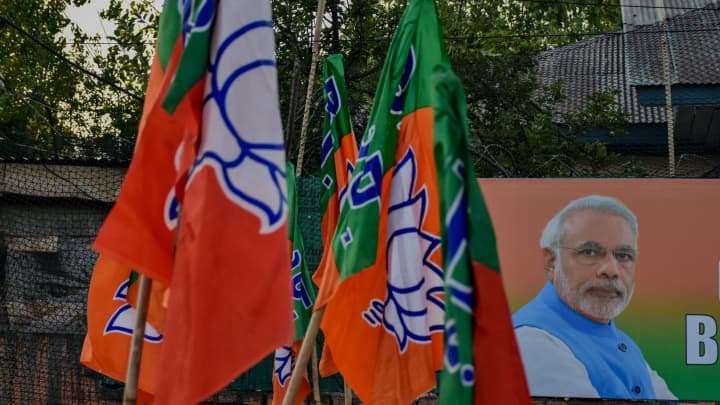
There is an "internal battle" happening within India's ruling Bharatiya Janata Party over inviting Chinese investments, as the country strives to become Asia's manufacturing powerhouse, Alicia Garcia-Herrero, chief Asia Pacific economist at Natixis said.
In the country's annual economic survey released last week, India's Chief Economic Advisor V Anantha Nageswaran proposed promoting foreign direct investments from China as a better option than increasing trade activity between the two countries. He reports to the finance minister.
This proposal was shot down by Trade Minister Piyush Goyal on Tuesday who said that there was "no rethinking at present" on allowing Chinese investments into India,
"Nobody wants to put up with the consequences in terms of how this will affect the BJP's image. Indians will not like this policy, but Modi and his finance ministry realized that this is needed," Garcia-Herrero told CNBC in an interview.
CNBC did not immediately receive a response from the BJP on whether there was an internal strife within the party on the issue.
The world's fastest growing economy aims to attract $100 billion in FDI annually over the next five years, Rajesh Kumar Singh, secretary at the Department for Promotion of Industry and Internal Trade, told in June. It received in financial year 2024.
Experts told CNBC that Chinese investments are needed in India's solar panel and battery manufacturing sectors — two areas that a report, citing Indian government sources , mentioned could see easing restrictions on Chinese investments.
"U.S. and Europe are a little bit hesitant to invest in India's manufacturing sector, most of the foreign investments have gone to the ICT [Information and Communication Technologies] sector, such as digital services," Herrero said.
Harsh V. Pant, vice president for studies and foreign policy at New Delhi's Observer Research Foundation, shared a similar stance, saying that India needs to be "plugged into Chinese supply chains" if it wants to meet its aspirations to become Asia's manufacturing hub.
However, he added that this is not just an economic issue, especially since the Asian giants have been at loggerheads on the .
"From an economic point of view, you need Chinese investments in certain sectors and a perfectly logical argument can be made. But the government of India is going to take a whole approach where national security and geopolitical dimensions are going to come into the calculus."
Speaking at a in Tokyo on Monday, India's Foreign Affairs Minister S. Jaishankar said relations with China were "not good [and] not normal right now."
In June 2020, and in a faceoff in the western Himalayas. Although no shots were fired, this was the biggest loss of life in combat between the two countries since 1967.
India increased scrutiny on Chinese investments into the country, and also blocked several Chinese mobile apps including TikTok following the incident.
India aims to reach and meet 50% of its electricity requirements from renewable energy sources by 2030.
But generation of solar power — the country's largest source of renewables — totaled just 113 terawatt-hours (TWh) last year, compared to 584 TWh in China, and 238 TWh in the U.S., according to .
"India really can't afford missing on Chinese investment for manufacturing. It's trade deficit with China has increased enormously last year, mainly because of green tech," said Herrero said, adding that China also has the lowest, most effective and least costly production of green technology.
India has little choice but to rely on China to enhance its renewables sector, choosing to improve domestic production through more Chinese investments would be a better choice rather than to increase imports, Herrero said. "At least there will be more money to create jobs."
Just like India's renewables goals warrant increased investments, so does India's battery manufacturing industry as the country aims for to be electric vehicles by 2030.
Mukesh Aghi, president and CEO of the U.S.-India Strategic Partnership Forum made clear that although India's EV market was growing at a steady pace with help from domestic manufacturers such as and Mahindra & Mahindra, it lags where China thrives: In creating cost-effective battery technologies.
"India doesn't have a developed EV battery ecosystem and requires third party support, particularly from countries like China, to accelerate efforts to meet strategic targets — just like the United States," Samir Kapadia, CEO of India Index and managing principal at Vogel Group said.
"By relaxing investment curbs, it can achieve those targets."
When asked on the other sectors India would want more Chinese investments in, Kapadia said it will be in the "biggest industries they have to fight to win in."
"The sectors that are going to attract Chinese investors are going to be ones that are too big to fail. It'll be the industries that India has to build over the next five years to be a developed economy that can fully capture its potential at scale," Kapadia said, adding that Chinese investments could potentially be directed to ramp up India's semiconductor industry too.




